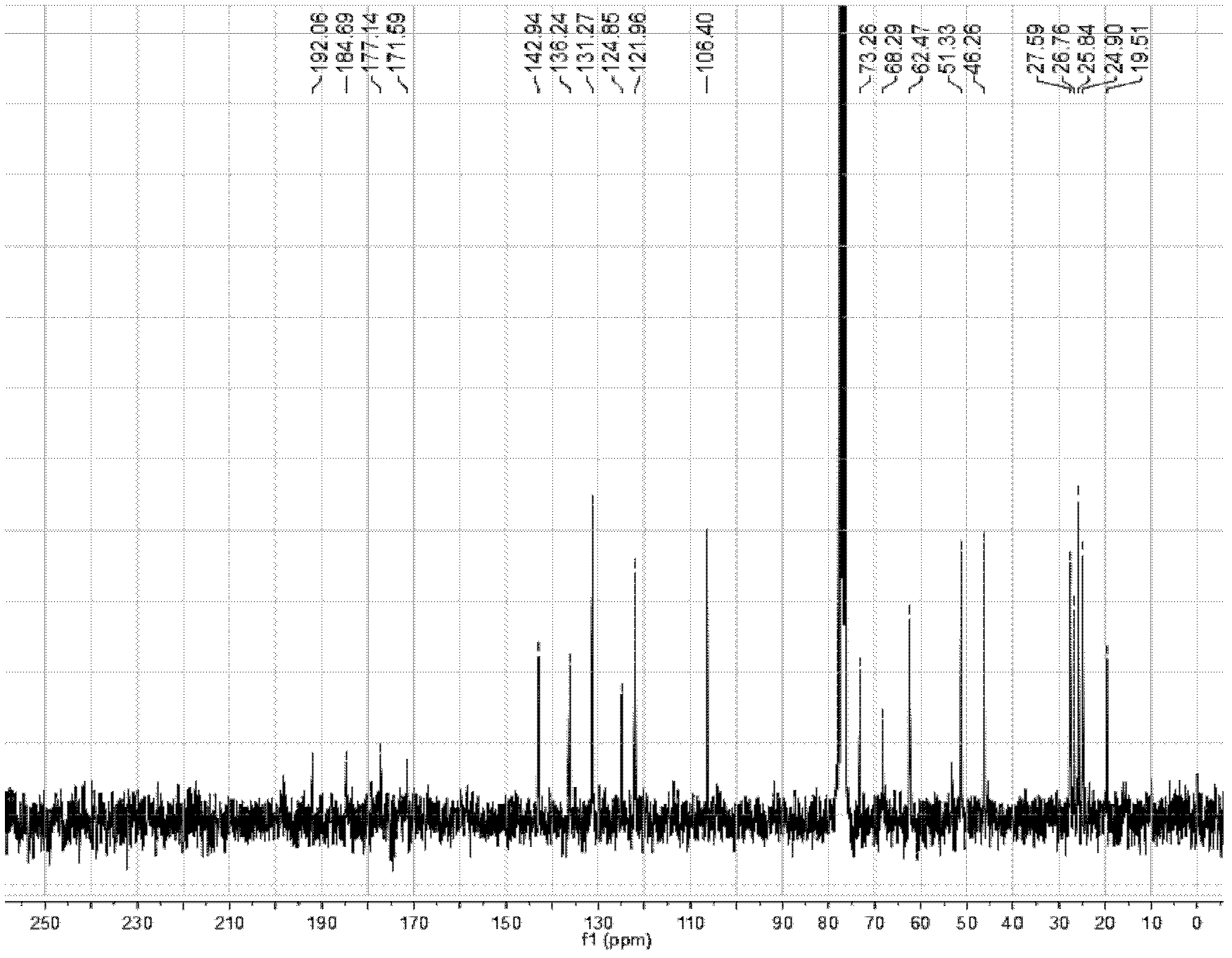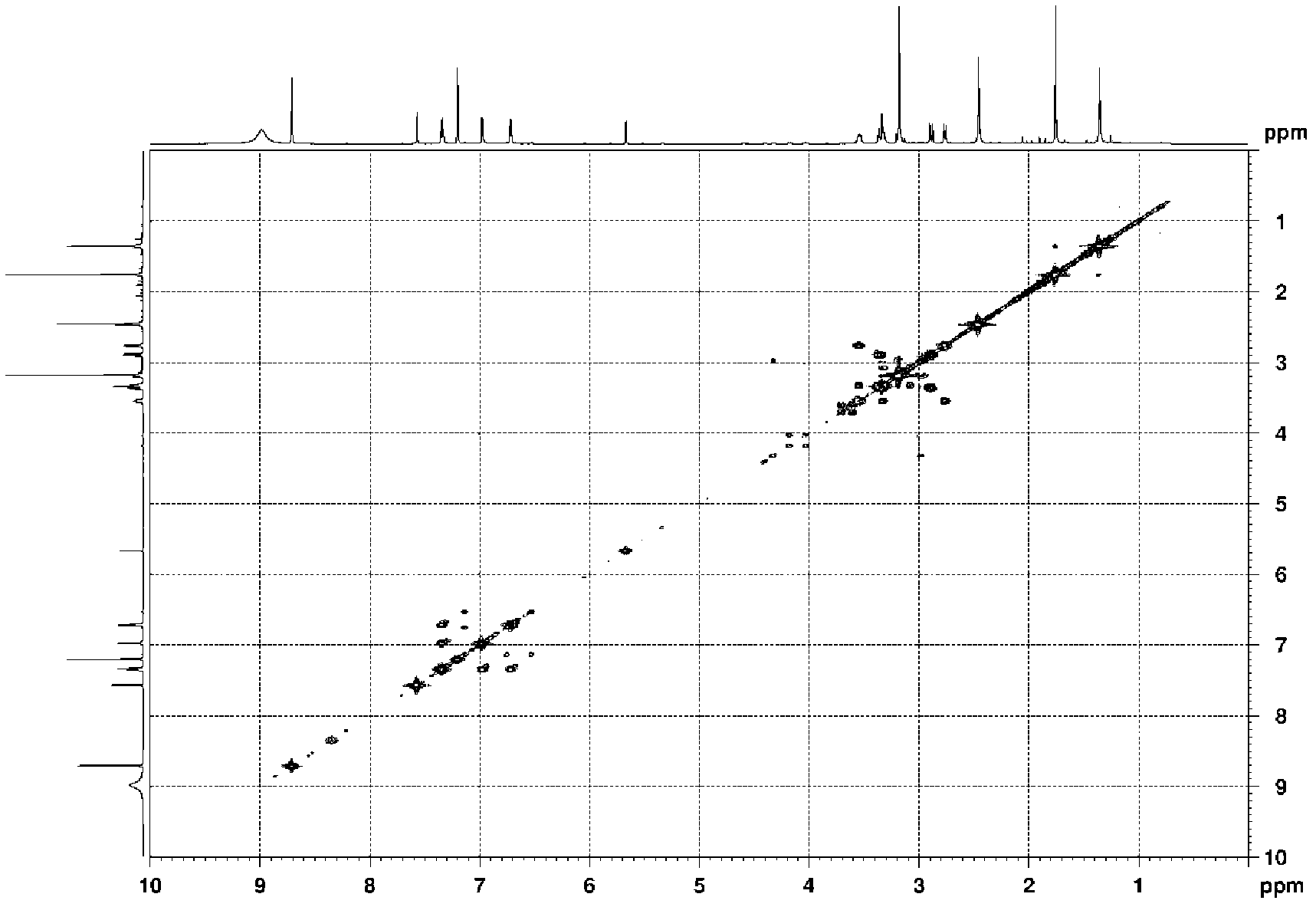Cyclopiazonic acid compound, and preparation and application thereof
A cyclopianilic acid and compound technology, which is applied to the cyclopianilic acid compounds and the fields of their preparation and application, can solve the problems of pest resistance, food safety, high toxicity and the like, and achieves the promotion of cytotoxic activity and the preparation of The method is simple and the effect of insecticidal activity is good
- Summary
- Abstract
- Description
- Claims
- Application Information
AI Technical Summary
Problems solved by technology
Method used
Image
Examples
preparation example Construction
[0037] The preparation method comprises the following steps:
[0038] (1) Preparation of the crude cyclopiazonic acid extract: after liquid fermentation of Aspergillus oryzae, filter, the filtrate is adsorbed with a macroporous resin, and then desorbed with methanol to obtain the crude cyclopiazonic acid.
[0039] (2), crude fractionation of the target compound: the crude cyclopiazonic acid obtained in step (1) is separated by normal phase chromatography by flash chromatography; the filler is silica gel, and ethyl acetate-methanol (EtOAc-MeOH) is used The solvent system was used for gradient elution, first eluted with ethyl acetate to remove non-polar impurities, and then eluted with ethyl acetate-methanol (v / v) with a volume ratio of 90:10-80:20 to obtain the target compound. Chromatographic fractions.
[0040] (3), purification of the target compound: the fraction containing the target compound obtained in step (2) is purified by reverse-phase medium-pressure chromatography...
Embodiment 1
[0043] Medium: ①YGP medium: yeast extract 5g, glucose 10g, peptone 5g, seawater 1L (sea salt concentration: 2.5%). ② Solid Martin medium: glucose 10g, peptone 5g, K 2 HPO 4 1g, MgSO 4 0.5 g, 20 g of agar, 1 L of sea salt water (sea salt concentration: 2.5%).
[0044] Preparation of fermented seed liquid: Aspergillus oryzae (Hmp-F28) strain was inoculated by streaking on Martin medium, and then activated in an incubator at 28° C. for 48 hours. Pick the activated spores and inoculate them in a 3L Erlenmeyer flask, which contains 1L of YGP medium, and place them in a shaker at 28°C and 170rpm for cultivation. After the bacteria balls grow out, they can be used as fermented seed liquid Use, about 48 hours.
[0045] Fermentation of strain Hmp-F28:
[0046] ① Culture medium: Prepare 16L of YGP medium and divide it into 16 Erlenmeyer flasks with a capacity of 3L.
[0047] ②Inoculation and fermentation: Use a sterilized pipette to draw the previously prepared seed solution and...
Embodiment 2
[0068] experimental method:
[0069] ①Sample processing: take out the 3-hydroxysperadine A that was previously frozen in a refrigerator at minus 20°C from the compound obtained in the above examples, and prepare 1mg / mL, 0.5mg / mL, 0.25mg / mL, 0.125mg by doubling dilution / mL, 0.0625mg / mL six concentrations, the total number of samples is 36, for future use. ②Hatching of Artemia salina: Artemia salina hatching liquid: see (Solis P N, Wright C W, Anderson M M et al. (1993). A microwell cytotoxicity assay using Artemia salina (brine shrimp). Planta Medica, 59(3), 250- 252.③ Artemia biological detection method: use a pipette gun to take 100 μL of the previously diluted sample into the well of a 96-well plate, and then add 100 μL of Artemia larvae suspension (containing 15-20 Artemia), so that the sample concentration is It was diluted to 0.5mg / mL, 0.25mg / mL, 0.125mg / mL, 0.0625mg / mL, 0.03125mg / mL, each concentration was repeated 3 times, and Artemia larvae suspension was used as bl...
PUM
| Property | Measurement | Unit |
|---|---|---|
| Particle size | aaaaa | aaaaa |
Abstract
Description
Claims
Application Information
 Login to View More
Login to View More - R&D
- Intellectual Property
- Life Sciences
- Materials
- Tech Scout
- Unparalleled Data Quality
- Higher Quality Content
- 60% Fewer Hallucinations
Browse by: Latest US Patents, China's latest patents, Technical Efficacy Thesaurus, Application Domain, Technology Topic, Popular Technical Reports.
© 2025 PatSnap. All rights reserved.Legal|Privacy policy|Modern Slavery Act Transparency Statement|Sitemap|About US| Contact US: help@patsnap.com



